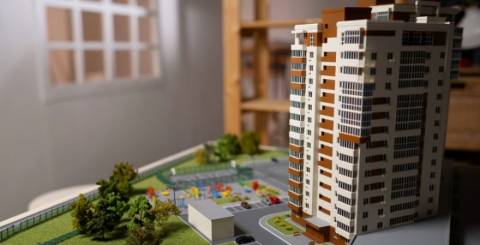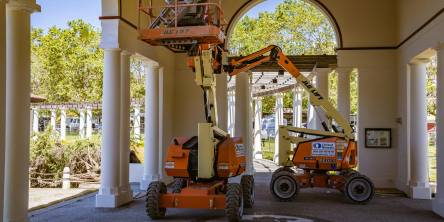Human Scale: A New Approach to Residential Development

In recent years, the term “human scale” has been increasingly used in urban planning. Behind this concept lies a philosophy of urban design that prioritizes the needs of real people over abstract indicators of building density or economic efficiency.
What does “Human Scale” Mean?
Human scale in architecture and urban planning is an approach in which the size of buildings, the distance between objects, and the layout of space correspond to the natural capabilities of human perception and movement.
Glass skyscrapers, giant shopping centers, and concrete complexes are being replaced by low-rise buildings 3-6 stories high. The buildings have individual features that make it easy to navigate the space.
The distances between key infrastructure facilities are calculated so that they can be covered on foot in 5-10 minutes. The street network is designed to be intuitive, without confusing intersections and dead ends.
This environment eliminates architectural gigantism, where the size of buildings overwhelms people psychologically. Instead, a sense of proportion is created: buildings serve as a backdrop for life rather than dominating it.
Mistakes of The Past
There is no doubt that the urban planning decisions in recent decades have often ignored the human factor. The desire to plan and develop as much residential real estate as possible in a smaller area has led to an increase in the number of skyscrapers in megacities, where hundreds of families live in vertical isolation.
Courtyards have been turned into parking lots, and green areas into residual spaces between buildings or blocks. Planning of infrastructure and development is concentrated in shopping centers on the outskirts, which require a car or bus to reach.
This layout creates an urban environment that is hostile to pedestrians. Wide avenues cut neighborhoods into isolated segments, and monotonous development deprives the space of its human dimension.
Why human Scale is Important
Designing on a human scale solves several fundamental problems. Such an environment creates psychological comfort: people find it easier to navigate and remember routes. This is especially important for children and the elderly, who are most sensitive to the scale of their surroundings.
Covering short distances between homes, shops, schools, and parks encourage walking and chance encounters with neighbours. A local community is formed, with people getting to know each other, exchanging contact information, meeting in personal and jointly solving everyday issues.
From an environmental point of view, the human scale also benefits. Fewer floors mean less strain on engineering networks, and pedestrian access to services reduces car use.
Successful Examples
Every year, there are more and more examples of real estate being built using the human scale philosophy. The Hammarby Sjöstad district in Stockholm combines 4-8-story buildings with developed infrastructure within walking distance. Residents can walk to a kindergarten in 3 minutes, a grocery store in 5 minutes, and a public transportation station in just 7 minutes.
In Freiburg, the Vauban district is built up with 3-4-story houses with individual facades. The streets are designed for slow-moving traffic, with priority given to pedestrians and cyclists. The result is a high level of neighborly interaction and safety.
In Turkey, real estate in Alanya is becoming a promising example, where new projects are moving away from the principle of maximum floor space. Complexes are being built with 4-6 floors, spacious grounds, swimming pools, and recreation areas on a human scale.
Such neighborhoods are attractive not only in terms of quality of life, but also from an economic point of view: high demand makes them more resistant to price declines during crises and allows them to recover their value more quickly when the market grows.
Similar Articles
The holiday season transforms neighbourhoods into glowing wonderlands, but today's homeowners are moving beyond the traditional approach of simply stringing lights wherever they fit.
City homes face a constant challenge around outdoor space. Gardens are small or nonexistent, balconies are narrow, and any outdoor area feels precious.
Anyone who's worked in a commercial kitchen knows they operate with an efficiency that home kitchens rarely match.
When you want to transform your home with a complete makeover, you must find the best ways to save money. Let's check some cost-saving tips for renovating.
Handrails are one of the few things that merge safety, fashion, and structural importance in a home most naturally when the home is being either designed or renovated.
Cabinets play a vital role in any home, combining function, organization, and aesthetic appeal. Whether in the kitchen, bathroom, or living area, cabinetry defines the layout, storage capacity, and overall look of a space.
Every homeowner eventually faces the question: Should I repair or replace my roof entirely? It’s not always an easy decision.
Accessing elevated heights is a common requirement in various industries, including construction, maintenance, warehousing, and event setup. However, safely reaching these high areas can present challenges.
When the holiday season approaches, one of the most beloved traditions is decorating homes with twinkling outdoor Christmas lights. However, many homeowners hesitate before pulling out their light strands, worried about potential damage to their property.









